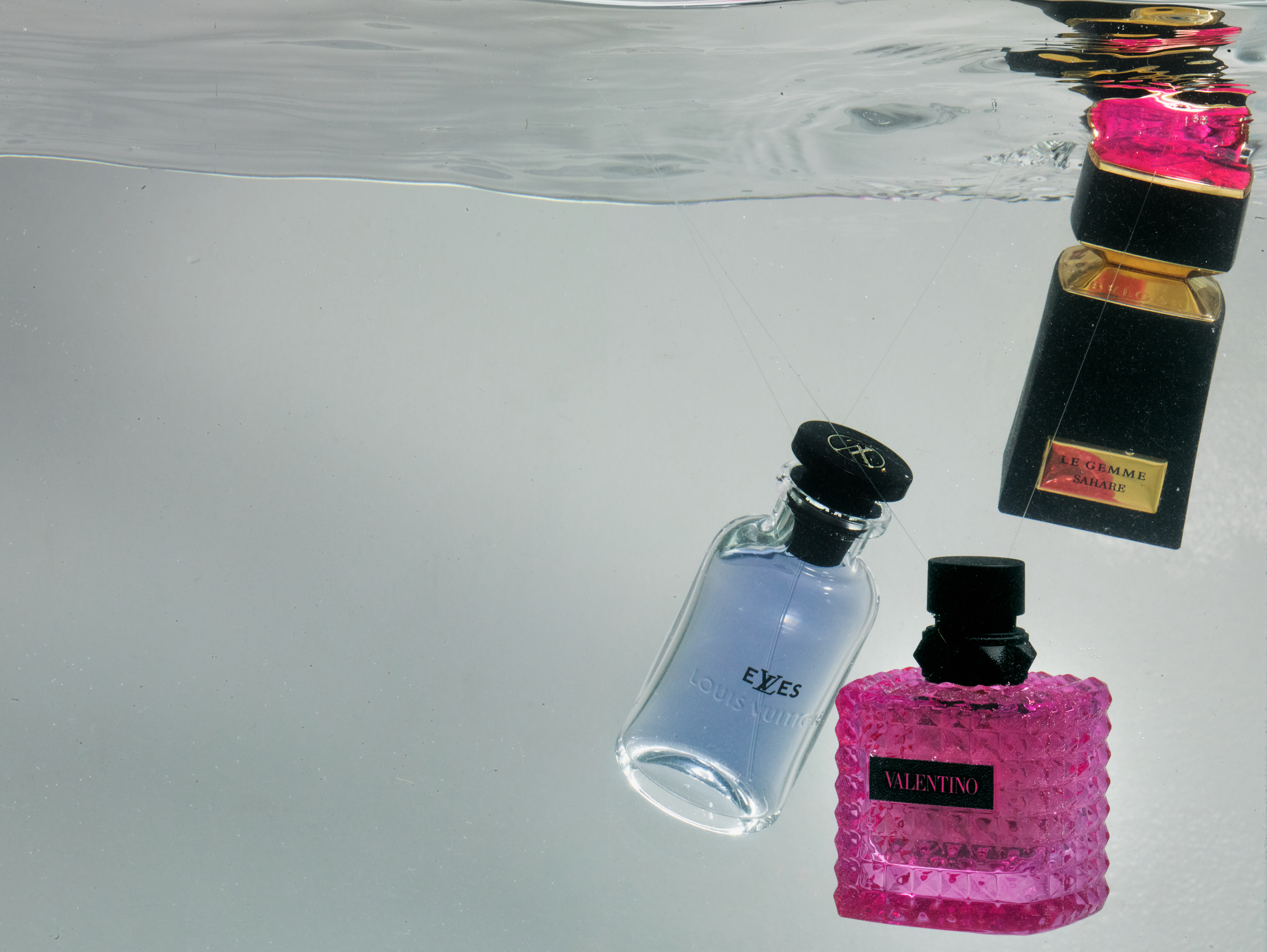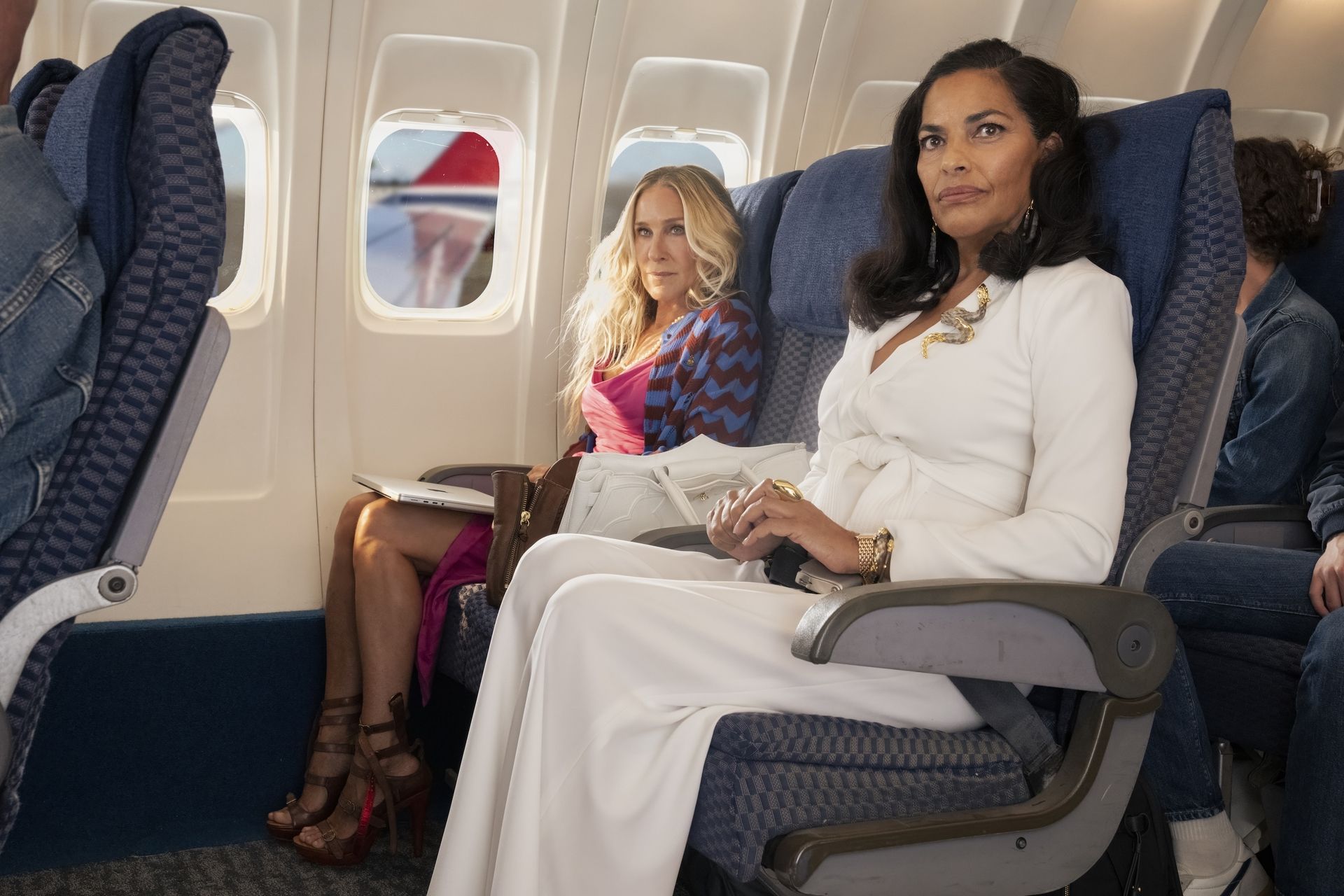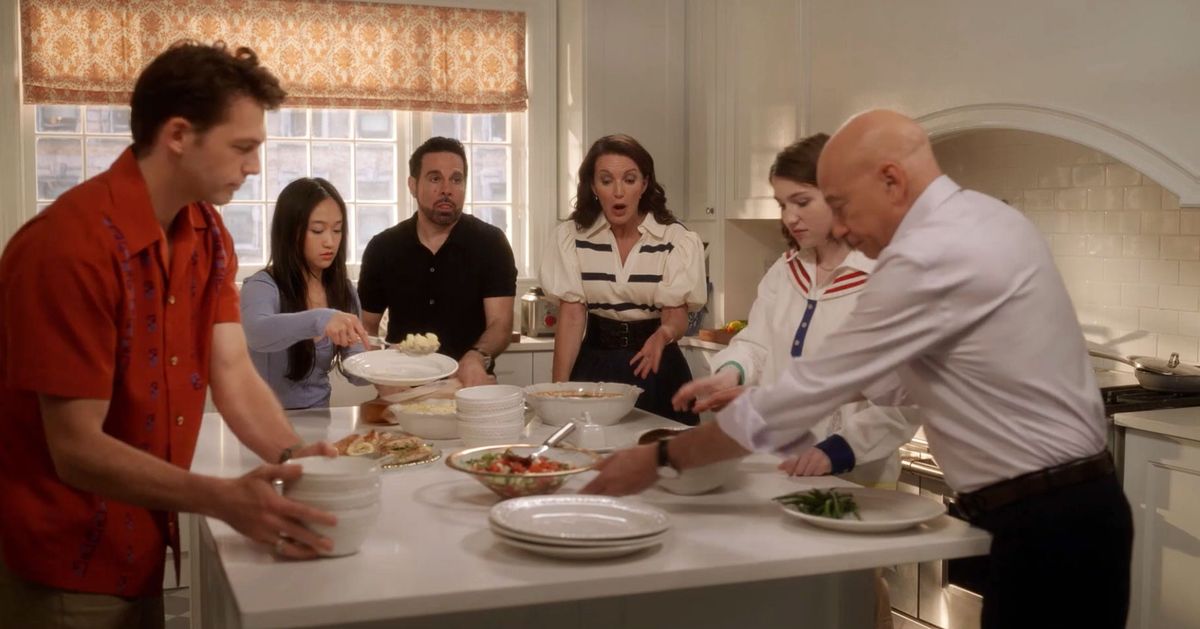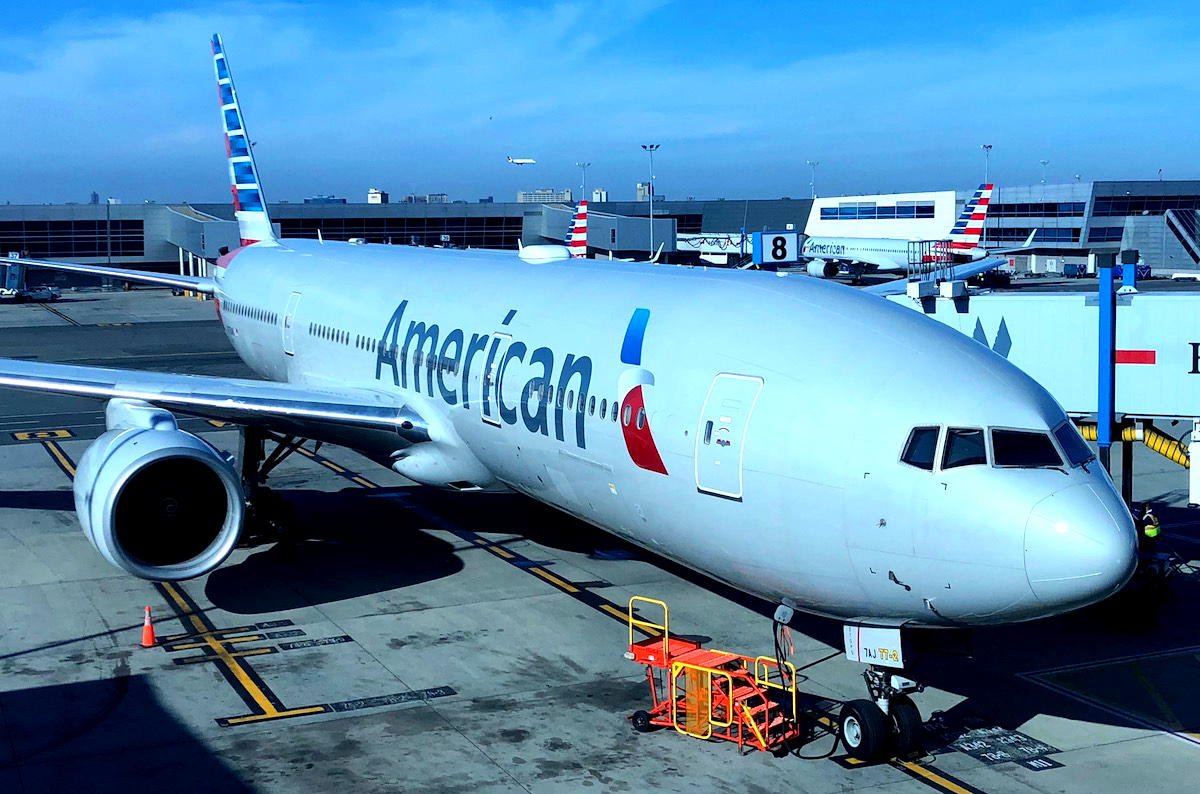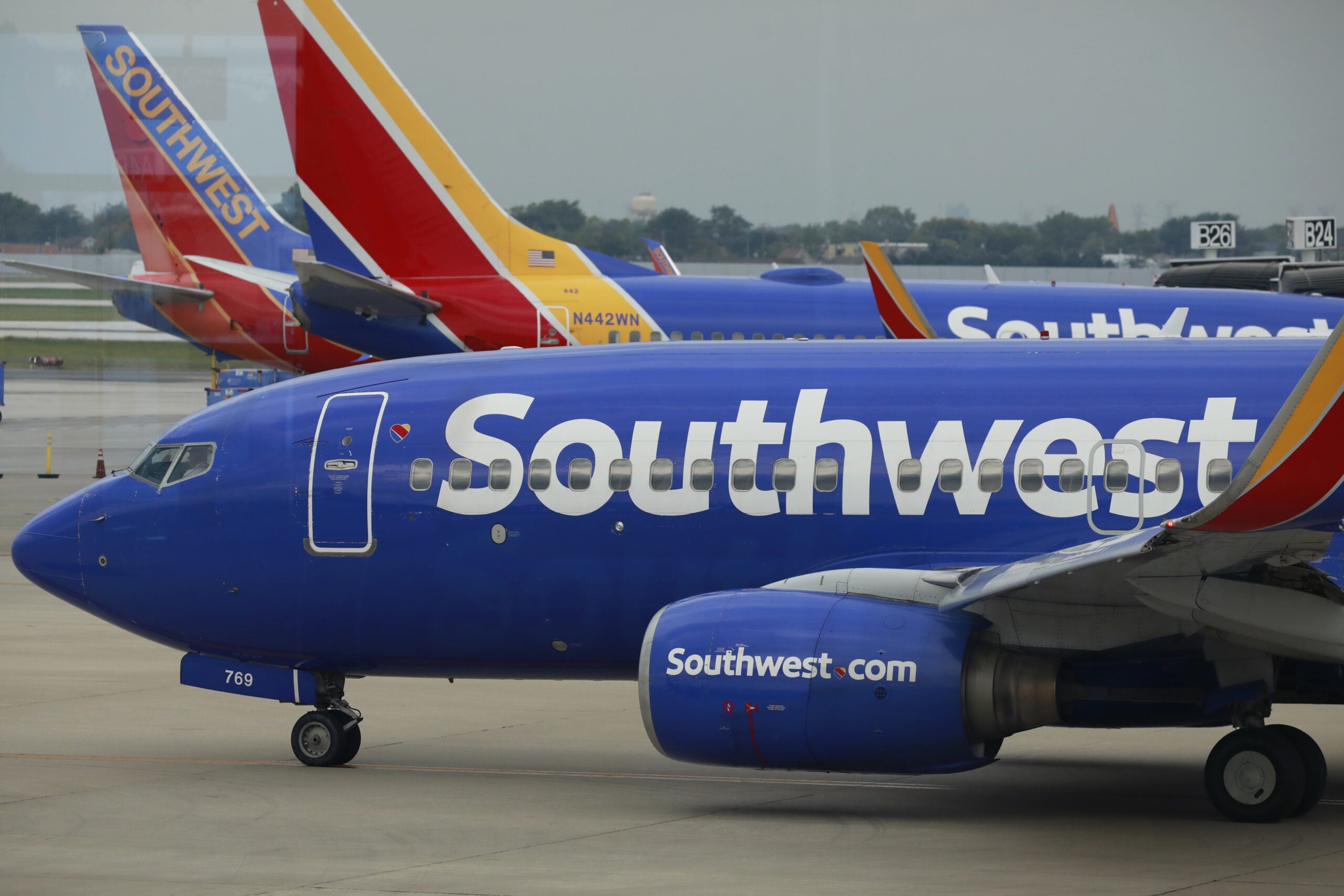A movie and TV lovers road trip through coastal North Carolina
Flanked by pristine barrier islands and dotted with charming towns and federally protected national seashores, North Carolina’s coast from the Outer Banks to Wilmington makes for an idyllic road trip. Nearly the entire length of the state’s 200-mile coast is drivable, albeit with an assist from ferries in a few spots. There’s plenty along this …

Flanked by pristine barrier islands and dotted with charming towns and federally protected national seashores, North Carolina’s coast from the Outer Banks to Wilmington makes for an idyllic road trip. Nearly the entire length of the state’s 200-mile coast is drivable, albeit with an assist from ferries in a few spots.
There’s plenty along this route to satisfy every taste and budget, but the region’s greatest asset is nature: Breezy salt marshes, dune-backed shorelines, and estuarial bays and rivers support a diverse array of wading birds, waterfowl, sea turtles, shellfish and other creatures. This majestic scenery has also inspired filmmakers to turn the state’s coast into a movie and TV production hub.
Related: The best gas credit cards to add to your wallet
Coastal North Carolina in film

During the early 1980s, Greater Wilmington became one of the most prominent U.S. hubs of film and TV production outside California.
Dozens of major movies and iconic TV shows like “Dawson’s Creek” and “One Tree Hill” have been filmed here. Although the local industry slowed down a bit in the mid-2010s, it has experienced a resurgence lately. Recent projects include the 2025 Zooey Deschanel movie “Merv” and the TV shows “The Summer I Turned Pretty” (now in its third season), “The Runarounds” and “The Waterfront” (a project from Kevin Williamson, of “Dawson’s Creek” and “Scream” fame). The upcoming comedy “Driver’s Ed” — starring Molly Shannon and “The White Lotus” alum Sam Nivola — was filmed in Wilmington in spring 2025.
Some locally filmed projects were set in other parts of the world. “Dawson’s Creek,” for example, took place in the fictional New England town of Capeside, Massachusetts, but it’s become closely associated with coastal North Carolina. However, some titles set in North Carolina — the current hit TV series “Outer Banks” and both versions of the chilling thriller “Cape Fear” — were filmed elsewhere.
Although this road trip takes in the state’s entire coastline, Wilmington and the surrounding Cape Fear area are the part of this itinerary that’s of the greatest interest to film lovers. However, you’ll pass through a few other places along the route, including the inland Raleigh-Durham area, that you may recognize from the big or small screen.
Related: 6 tips for surviving a road trip with a large family
Coastal North Carolina road trip planning

As you follow this itinerary north to south, if there’s ocean outside the driver’s side window, you’re probably going in the right direction. Even in the less-developed section south of Nags Head and down through Hatteras Island and Ocracoke Island, you’ll generally have decent cell service and rarely go more than 20 miles between gas stations and other travel services.
Do try to heed posted speed limits, especially signage warning of construction or detours resulting from sections of roadway that storms have damaged. Deer and other wildlife commonly cross the road in the Outer Banks, as do families and kids making their way to the beach, so take it slowly and enjoy the enchanting scenery.
Neither Cape Hatteras National Seashore nor Cape Lookout National Seashore charges an access fee, and most beaches and parks in the Outer Banks have free parking. However, around Wilmington and Cape Fear, the beaches and downtown areas do charge for parking, and rates can be steep (up to $35 per day) in popular areas such as Wrightsville Beach and Carolina Beach.
Budgeting your time
Set aside a minimum of four nights and five days to complete this journey. For a more leisurely adventure, spend a night or two at the start in the Raleigh-Durham area and add two or three nights in Wilmington, especially if you plan to check out some of that area’s key filming locations.
From Durham, give yourself about five hours to drive to the northern end of the Outer Banks without stops. From there, you can get to the tip of Hatteras Island in as little as two hours, but give yourself a full day to stop and enjoy the sights along the way. Factoring in the two ferry crossings and spending an hour or two exploring Ocracoke Island, the travel time from the tip of Hatteras Island to the mainland town of Cedar Island is at least five hours. From there, it’s about a three-hour drive without stops to Wilmington.
Getting to the North Carolina coast
The Raleigh-Durham-Chapel Hill area, aka the Research Triangle, has the largest major airport — Raleigh-Durham International Airport (RDU) — within a few hours’ drive of the North Carolina coast. RDU is served by all major U.S. airlines and several international carriers. It is also the base airport of low-cost Avelo Airlines and is a focus city of Delta Air Lines.
Norfolk International Airport (ORF), across the border in Virginia, is much closer than RDU to the north end of the Outer Banks (just a two-hour drive north). But ORF has far fewer direct flights than RDU, and it’s a longer drive from this itinerary’s endpoint, Wilmington.
If you end your trip in Wilmington, you could fly home from Wilmington International Airport (ILM), which has direct flights to several major domestic hubs and service to some smaller cities on Avelo and Breeze Airways. Or make the 2 1/2-hour drive back to the Raleigh-Durham area, since you’ll generally save a bundle returning your rental car to where you picked it up.
Ferry vs. the overland route
The most relaxing and scenic route down the coast entails taking two ferry trips and a 20-minute drive across Ocracoke Island, which is also a lovely place to spend a few hours, or even overnight. The total travel time from Hatteras Island to Wilmington via this route is at least 7 1/2 hours without stops.
Alternatively, you could skip the ferry and make the 5 1/2-to-6-hour drive to Wilmington by backtracking from Cape Hatteras up state Highway 12 to Roanoke Island and continuing west via U.S. Route 64 and then south on U.S. Route 17 through the historic river towns of Washington and New Bern, each of which offers a nice variety of attractions and museums. But the memorable scenery of North Carolina’s southern shoreline, the Crystal Coast, makes the ferry option far more desirable if you can budget the time.
The best months to visit coastal North Carolina
March through December is an ideal time for this drive, but each season has pros and cons, with early spring and late fall being a bit cool for some, but midsummer potentially too hot and humid (although ocean breezes help). April to May and mid-September to mid-November are generally the sweet spots, although you should book ahead and prepare for higher rates on weekends during these popular periods. If swimming and beachcombing aren’t top priorities, consider visiting in winter, which is still relatively mild and yields fewer crowds and better prices.
Durham to Duck and Corolla Beach

Home to some of the South’s leading universities, tech innovators and the state capital, the vibrant Research Triangle offers plenty to see and do. Consider spending a few days in these parts if you’re not rushing to get to the coast. Movie buffs will find a handful of notable sites in this area in which parts of several films were shot, including “Bull Durham,” “Patch Adams,” “The Last of the Mohicans” and “Kiss the Girls.”
Related: Not just for flights: Using points and miles to save on summer road trips
Exploring Durham and Raleigh
Downtown Durham has undergone an impressive renaissance over the past two decades. Upscale apartments and condos have brought fresh energy, culture and culinary riches to this historic city center. Restaurants like the Cheeni (along with its sister, Bar Beej) and Saltbox Seafood Joint have earned recent James Beard Award nominations. From February through May, you can catch a North Carolina Central University Eagles game at iconic Durham Athletic Park, aka The DAP, which was immortalized in “Bull Durham” (alas, the city no longer has a minor league team). Other filming locations from that classic baseball dramedy include Durham’s Green Room pool hall and Mitch’s Tavern in Raleigh, where the Nuke, Crash and Annie characters meet for the first time.
On Duke University’s campus, where parts of “I Know What You Did Last Summer” and Natalie Wood’s final movie, “Brainstorm,” were filmed, the 55-acre Sarah P. Duke Gardens feature gracious terraces and walkways. The outstanding Nasher Museum of Art is known for its collection of contemporary works, with a specific emphasis on artists of African descent.
It’s a 25-minute drive southwest to visit the leafy main campus of the University of North Carolina in beautiful Chapel Hill, which makes up one corner of the metro region’s Research Triangle. The campus was featured prominently in the Robin Williams movie “Patch Adams” and the Morgan Freeman and Ashley Judd thriller “Kiss the Girls.” Don’t miss the eclectic Ackland Art Museum and the Coker Arboretum.
Where to stay
Set in a striking art deco downtown skyscraper from the 1930s, the 21c Museum Hotel Durham (rates start at $383 per night) contains 125 stylish rooms and common spaces decorated with provocative contemporary artwork. Aloft Raleigh (rates start at $174 or 27,000 Marriott Bonvoy points per night) is a comfortable midrange property on the west side of downtown Raleigh, steps from Pullen Park and NC State University’s campus.
Albemarle Sound
It’s about a 4 1/2-hour drive east from the Raleigh-Durham area to the upper end of the state’s Outer Banks. The most scenic route is via U.S. Route 64 through the state’s largely agrarian Piedmont and Coastal Plain through Rocky Mount and Tarboro.
At Williamston, turn north onto U.S. Route 17 and continue across the Chowan River, passing through several quaint, historic towns set along Albemarle Sound. This 450-square-mile estuary extends east to the Outer Banks, eventually joining Pamlico Sound. Stop in downtown Edenton for a stroll by the waterfront and to view the handsome 1886 Roanoke River Lighthouse.
Continue east-northeast on U.S. Route 17 through Hertford and across the Perquimans River and onward to charming Elizabeth City, a community of around 18,600 that overlooks the Pasquotank River. The 2006 Kevin Costner-Ashton Kutcher action drama “The Guardian” was shot in and around town. Downtown is rife with cute shops and galleries, as well as some appealing stops for a bite to eat en route to the coast — Cypress Creek Grill for Creole-inspired seafood is a good bet, and Seven Sounds Brewing Company serves up well-crafted local ales.
From here, it’s a 50-mile drive on U.S. Route 158 down to the Wright Memorial Bridge, which carries you across Currituck Sound and into the Outer Banks.
Duck and Corolla Beach
From the mainland, U.S. Route 158 crosses Currituck Sound into the upper span of islands at the town of Kitty Hawk. A left turn leads north about 20 miles up Highway 12 through the towns of Duck and Corolla, and there are generally fewer homes and businesses the farther north you travel, until the paved road dead-ends at Corolla Beach.
Where to stay
Having completed an ambitious renovation in spring 2025, the elegant but unpretentious Sanderling Resort (rates start at $385 per night) on Duck’s beachfront is one of the most desirable retreats in the Outer Banks. It features 123 rooms, two big pools, a world-class spa and luxurious suites overlooking the ocean. Farther north, with a tranquil setting on Currituck Sound, the 42-room Inn at Corolla Light (rates start at $229 per night) anchors an extensive resort community with pools, tennis courts and other fun amenities. Rooms are done in simple, tasteful nautical hues, and several are pet-friendly.
Corolla Beach to Cape Hatteras

Heading south on Highway 12 leads down through the most densely developed stretch of the Outer Banks for about 15 miles to Nags Head. Here you can briefly detour across the bridge to Roanoke Island, home to the popular vacation town of Manteo. Return toward Nags Head, turning south down Highway 12 through Cape Hatteras National Seashore.
Kitty Hawk and Nags Head
Vacation homes, many on stilts for protection during storms, and family-friendly midrise hotels line Highway 12 through this stretch of the Outer Banks. You’ll find some excellent spots for lunch, including the beachy-casual Rundown Cafe and Mama Kwan’s Tiki Bar and Grill, which offer a fusion of Polynesian and Caribbean fare and colorful tropical cocktails.
In Kill Devil Hills, stop at the Wright Brothers National Memorial to see where aviation pioneers Wilbur and Orville Wright conducted their first successful airplane flights; the 430-acre site has an excellent museum, walking paths that trace the path of the original flights and a 60-foot-tall granite monument to their achievement. Scenes from the movie “Brainstorm” were also shot at this site.
Manteo and Roanoke Island
At the southern end of Nags Head, take the U.S. Route 64 bridge across Roanoke Sound to visit Roanoke Island, home originally of the Indigenous Algonquian people and then Sir Walter Raleigh’s ill-fated 1587 settlement. Learn more about the Roanoke Colony at Fort Raleigh National Historic Site by attending an outdoor, waterfront performance of the historical play “The Lost Colony” (shown mid-May to mid-August) and checking out the exhibits in the Lindsay Warren Visitor Center. Next door, stroll through the 10-acre Elizabethan Gardens, and tour the excellent Roanoke Island Maritime Museum in quaint Old Manteo. You can also book a candlelight walking tour through the village each evening.
Relax at an outdoor table overlooking Pirate’s Cove Marina at lively Blue Water Grill and Raw Bar, which offers bountiful salads, tuna sashimi, broiled oysters, and hearty pastas and steaks. There’s an excellent sister restaurant in Nags Head, Blue Moon Beach Grill.
Cape Hatteras National Seashore
Returning across Roanoke Sound to the Outer Banks, head south on Highway 12 into Cape Hatteras National Seashore. Within minutes, you’ll come to pristine dunes at Coquina Beach and the short turnoff to Bodie Island Lighthouse. If you’re up for a workout, climb the 214 steps to the observation deck. At the base, pick up information about the seashore’s trails, boating areas and habitats at the Bodie Island Visitor Center and go for a boardwalk stroll through a salt marsh that teems with migratory birds.
The road continues south for the next 40 miles through a mix of undeveloped shoreline and small, laid-back beach villages — Rodanthe, Waves, Salvo, Avon — with a slower, folksier vibe than Nags Head. In the very chill village of Avon, stop for lunch at Ketch 55 Seafood Grill, a casual tavern known for Caribbean jerk chicken, soft-shell-crab sandwiches, and steamed Carolina shrimp with cocktail sauce and drawn butter.
Much of the 2008 film adaptation of Nicholas Sparks’ romantic drama “Nights in Rodanthe,” starring Richard Gere and Diane Lane, was filmed in the quaint village of Rodanthe. The 13-mile-long island that’s home to Pea Island National Wildlife Refuge preserves critical habitats and nesting grounds for sea turtles as well as migratory shore and wading birds, including wigeons, American oystercatchers, least terns and snowy egrets. From the small visitor center, two boardwalk nature trails offer great opportunities for viewing wildlife.
At the southern tip of Hatteras Island, visit the most recognizable structure on the Outer Banks, the Cape Hatteras Lighthouse, which at just under 200 feet is the tallest brick lighthouse in the country. You can climb the 257 steps (it’s equal to a 12-story building) to the top for a breathtaking view.
It’s about a half-hour drive through the villages of Buxton, Frisco and Hatteras to reach the dock for the free one-hour ferry to Ocracoke Island. These boats run about every half hour in summer, but there can be long waits on busy weekends; fortunately, you can kill time if you’re delayed at one of the fun waterfront restaurants (Wreck Tiki Bar and Grill is a good option), touristy but colorful souvenir shops, and the intriguing Graveyard of the Atlantic Museum, all within walking distance of the terminal.
Where to stay
The charming Colington Creek Inn (rates start at $195 per night) lies just west of Wright Brothers National Memorial on a patch of land surrounded by water. Built in 2005, this well-outfitted B&B offers six roomy accommodations and has a small pool and sundeck.
Adjacent to a small marina on historic Roanoke Island, the posh but informal Burrus House Inn Waterfront Suites (rates start at $350 per night) offers 12 airy suites with plenty of perks, such as decks, jetted tubs and gas fireplaces. Amenities include free use of kayaks and bikes, and an afternoon wine social.
It’s a short drive to Cape Hatteras Lighthouse from the Inn on Pamlico Sound (rates start at $254 per night), a yellow boutique hotel with a beach and a long boardwalk on the sound. Most rooms have decks with waterfront views, and the romantic cafe serves sophisticated coastal fare.
Cape Hatteras to Beaufort

After catching the hourlong ferry to Ocracoke Island, you can meander a bit around this peaceful patch of dunes and salt marshes before catching the second ferry for a three-hour ride across the southern end of Pamlico Sound to the mainland. And from there, it’s a relaxing drive of under an hour, with an optional detour to Cape Lookout National Seashore, to Beaufort.
Ocracoke Island
At 10 square miles and accessible only by ferry, Ocracoke Island feels more remote than any other town along this drive. The notorious pirate Blackbeard was killed here in a violent battle in 1718, but these days the most excitement you’re likely to encounter is a rush to the bar during last call at 1718 Brewing pub (try the tasty sour ales and mango IPAs). Other adventures include lazing on the sand at glorious Ocracoke Beach, scampering beneath (you can’t climb it) the nation’s second-oldest operating lighthouse, and viewing old memorabilia and furnishings at the quaint Ocracoke Preservation Museum.
If you’re not spending the night, try to go over on an early ferry and give yourself a few hours for exploring and lunch before continuing on the ferry to Cedar Island. The ferry costs $15 for a car and does accept reservations, which are a good idea in summer; note that the last ferry is 4 or 4:30 p.m., depending on the time of year.
Cape Lookout National Seashore
Once you land at Cedar Island, it’s a 40-mile drive to Beaufort and another 100 miles to Wilmington. The first part of this drive is the prettiest, as Highway 12 and then U.S. Route 70 pass through the salt marshes of Cedar Island National Wildlife Refuge and then along Core Sound, across which you can see another set of barrier islands that are part of Cape Lookout National Seashore, a far more remote and wild section of coastline than Cape Hatteras.
If you’re curious about exploring Cape Lookout, make the 9-mile detour south from U.S. Route 70 west of Smyrna to Harkers Island, a laid-back fishing village that’s home to Cape Lookout’s headquarters and its main Harkers Island Visitor Center; here you can book a ferry out to the islands, including to Cape Lookout Lighthouse and beach.
Beaufort
Follow U.S. Route 70 to Beaufort, a charming little port community founded in 1713. Note the pronunciation of Beaufort (BOH-fert), which differs from that of the similarly alluring coastal South Carolina town of Beaufort (pronounced BYOO-fert). It’s an appealing stop for a bite to eat or a sunset cocktail in the bustling downtown overlooking Taylor Creek. There’s also an excellent North Carolina Maritime Museum branch and several blocks of neatly preserved Colonial and Victorian homes.
As the dinner hour approaches, you’ll be treated to gorgeous views of Beaufort’s Town Creek Marina from City Kitchen, an unfussy gathering spot known for creatively prepared crabcakes, Korean-style pork belly tacos and rich sticky toffee pudding for dessert. Downtown along the waterfront, Moonrakers occupies a stately two-story building with a rooftop seating area — it’s a standout for elevated coastal cooking (consider the blackened grouper).
After crossing into Morehead City, head south to Atlantic Beach and follow state Highway 58 west along this pretty barrier island, then pick up state Highway 24 to Jacksonville — home to the largest U.S. marine base, Camp Lejeune — and continue on U.S. Route 17 to Wilmington.
Where to stay
In case you needed an incentive to spend a night on tranquil Ocracoke Island, the 10-unit Captain’s Landing Waterfront Inn (rates start at $195 per night) on Silver Lake Harbor offers spacious suites with private decks on the water, full kitchens and views of the lighthouse. Back on the mainland, the contemporary Inlet Inn (rates start at $241 per night) lies right in the heart of Beaufort’s historic downtown, across the street from Taylor Creek and the ferry to Cape Lookout National Seashore’s pristine Shackleford Banks barrier island. Many rooms overlook the water.
Exploring Wilmington and Cape Fear

A culturally rich, historic port city on a deep, protected river inland from a glorious beachfront, Wilmington (population 127,300) feels a bit like two other famous coastal cities farther south — Charleston and Savannah. But it keeps a lower profile than the other two, despite becoming an increasingly popular place to live and vacation. It’s both less expensive and usually less crowded, too. The lively downtown flanks a beautiful stretch of the Cape Fear River, which you can appreciate during a stroll — try doing this around sunset — along the nearly 2-mile-long Wilmington Riverwalk, which bustles with cafes, markets and a scenic marina.
This is also a good spot to take in the scenery you’ll likely recognize from the many movies and TV shows filmed in the area. Wilmington Riverwalk appeared repeatedly in “Dawson’s Creek,” “One Tree Hill” and various movies, including several adaptations of Nicholas Sparks’ novels. Fans of “One Tree Hill” will want to snap a selfie at Naley Bench (at the foot of Dock Street, a small plaque marks the spot where the characters Nathan and Haley met for their first tutoring session).
For a more detailed look at the area’s filming history, take the Wilmywood Movie & TV Location Walk, a guided 90-minute tour that takes you past sites that have appeared in more than two dozen productions, including “Divine Secrets of the Ya-Ya Sisterhood,” “Iron Man 3,” “Sleeping with the Enemy,” “Tammy” and “Weekend at Bernie’s.” Tickets are sold at the Black Cat Shoppe, a quirky gift store carrying “One Tree Hill” and “Dawson’s Creek” merch. Also worth a stop is Papercut Books, a cool little indie shop that served as the Whale of a Tale bookstore in “The Summer I Turned Pretty.”
Fans of “Blue Velvet,” the 1986 cult classic from the late director David Lynch, can stop by Winnie’s Tavern, which stood in as The Slow Club in the movie, and Savorez, which appeared as Arlene’s Restaurant. The tragic lead Dorothy Vallens lived in the Carolina Apartments Building at 420 Market Street. Other landmarks in or near downtown to watch for include Williston Middle School, which stands in as Woodsboro High School in the 2022 reboot of “Scream,” and the campus of the University of North Carolina Wilmington, where several scenes from 2013’s “The Conjuring” were shot.
Spots that offer excellent dining and a glimpse of film history include the convivial gastropub Hell’s Kitchen, which appeared in “The Summer I Turned Pretty” and “One Tree Hill.” The latter also featured the lively pool hall Blue Post Billiards, which has become a favorite hangout of film crews and appeared in “Dawson’s Creek.” Having starred as the diner in the 2024 film “The Supremes at Earl’s All You Can Eat,” Rx Chicken & Oysters is a superb restaurant with a dedicated sea-to-table focus.
Wrightsville Beach
A few miles east of downtown, wander amid the 67 acres of manicured gardens, moss-draped live oaks, and flowering magnolia and camellia trees at Airlie Gardens, which has also appeared in the movie “The Choice” as well as plenty of “Dawson’s Creek” and “One Tree Hill” scenes.
Then continue across Bradley Creek to upscale Wrightsville Beach, where you can admire the ocean from the historic Johnnie Mercers Fishing Pier, shop for souvenirs and beach-picnic supplies at Robert’s Grocery, or linger for a leisurely repast at one of several good eateries. The Workshop serves excellent coffee drinks and smoothies, and La Duna Paradiso at the stylish Trailborn Surf & Sound resort serves refined Mediterranean fare on a patio overlooking the water (the Sunday brunch is especially enjoyable). The resort is next door to Crystal Pier, which has appeared on screen many times, including in the opening credits of “Dawson’s Creek.”
Carolina Beach and Kure Beach
Follow U.S. Route 421 south along the Cape Fear Peninsula. Rent a kayak at Carolina Beach State Park from Paddle NC and navigate among the seabirds along a wide stretch of the Cape Fear River. Or walk the easy but fascinating Venus Flytrap Trail, one of the only places in the world where these small carnivorous plants exist in the wild. The park also appeared in the Sandra Bullock and Ashley Judd 2002 movie “Divine Secrets of the Ya-Ya Sisterhood” and the Jennifer Aniston and Jason Sudeikis black comedy from 2013, “We’re The Millers.”
Head nearby to the Southerly to try a made-from-scratch country-ham-and-cheddar biscuit sandwich for sustenance. Or continue into downtown Carolina Beach for authentic slow-cooked pulled-pork barbecue and grilled oysters at Sunny Daze Smokehouse. The adjacent Carolina Beach Boardwalk abounds with amusement rides and arcade games, and is a frequent site of concerts, fireworks shows and festivals — it also appears in “The Summer I Turned Pretty.”
A few miles south in Kure Beach, walk around the Civil War ramparts and museum at Fort Fisher State Historic Site, and the gorgeous beach across the road at Fort Fisher State Recreation Area, which is one of the only sites in North Carolina where a scene (of a motorcycle race, in Season Four) of “Outer Banks” was shot. The park, a nesting area for endangered loggerhead sea turtles (from around mid-May through August), also appeared in the movie “Merv.” Just next door is the superb North Carolina Aquarium at Fort Fisher, which has fascinating indoor exhibits (the playful sea otters are a crowd favorite) and walking paths through gardens teeming with birdlife.
Southport
You could return to Wilmington from here, or if you have a little extra time, continue south via the Fort Fisher Ferry ($7 for a car and passengers) for a scenic 35-minute ride across the Cape Fear River to picturesque Southport, a historic village with an inviting waterfront park and several B&Bs, art galleries and cozy restaurants. The town and its striking Victorian buildings have appeared in many films and TV shows produced in Wilmington, from “I Know What You Did Last Summer” to the 1987 Oscar-nominated “Crimes of the Heart.”
Where to stay
You can’t beat the views of the riverfront or the proximity to downtown Wilmington retail and dining at the Hotel Ballast Wilmington, Tapestry Collection by Hilton (rates start at $327 or 60,000 Hilton Honors points per night), a midrise hotel with a large pool and restaurants. Book one of the nine beachy-chic apartment-style suites at The Lighthouse at Kure Beach (rates start at $388 per night) for a memorable stay overlooking the sweeping dunes and the ocean. Each has a kitchenette and balcony, and Kure Beach Pier is a short stroll away.
Related: Top tips for how to save on gas













































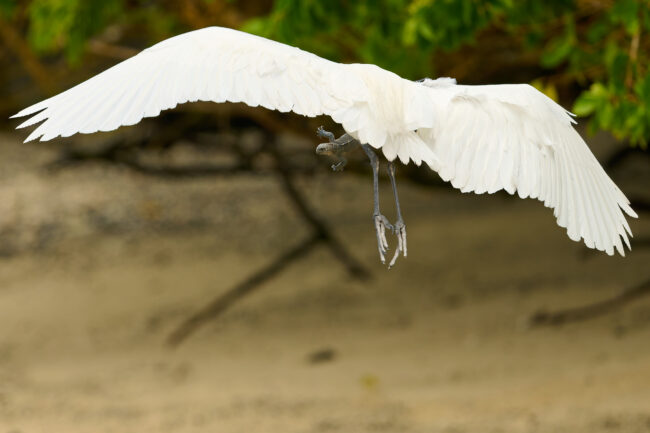















-30-7-screenshot_0FxoE4J.png?width=1920&height=1920&fit=bounds&quality=70&format=jpg&auto=webp#)


























































































































